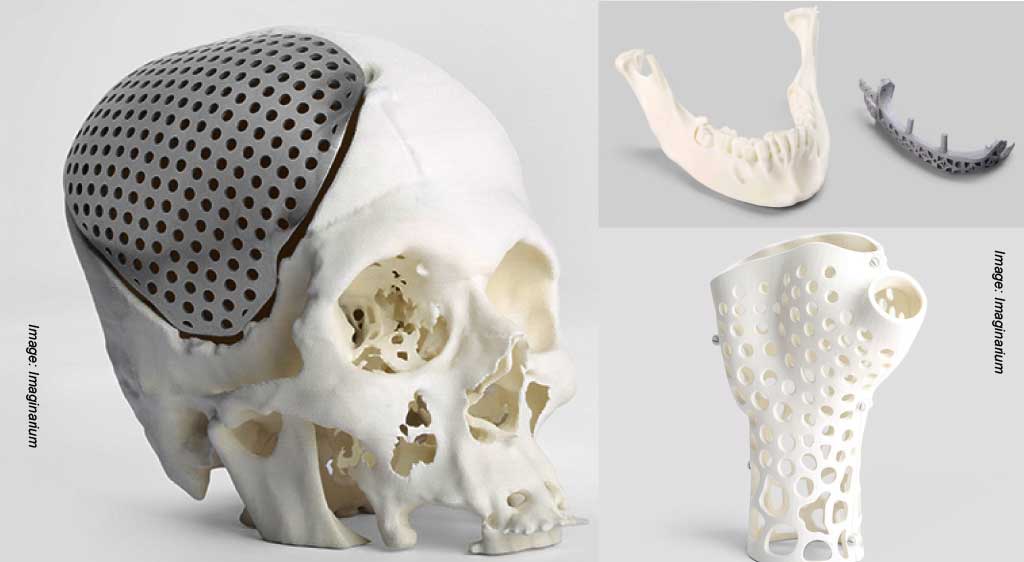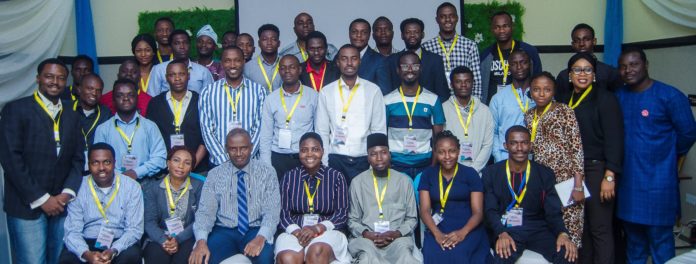Last week, on October 28th & 29th, the non-profit organization FAMA (short for Future of Additive Manufacturing in Africa), held a virtual conference on additive manufacturing in Africa. The organization gathers a Pan-African community of Additive Manufacturing professionals that all share the same vision: raise awareness, produce and promote Standards, Insights, Reports, Research and Regulation for effective adoption and implementation of AM in the Manufacturing Industry across Africa.
The first edition of the FAMA conference took place last year in Nigeria, Lagos. Due to the Coronavirus pandemic, this second edition took place virtually, giving opportunity to more professionals across the world to attend the conference. The online conference gathered over 80 participants during the first day and nearly 60 participants on the second day.
I have been able to attend the conference on the first day. Topics discussed on that day, shed light on additive manufacturing activities in Africa, the role of AM in revitalizing the medical field in developing countries, the different ways to incorporate additive manufacturing in a business, as well as smart product development.
While some of these topics might seem similar for anyone that used to attend additive manufacturing conferences, it should be noted that, when discussed as part of the FAMA event, they brought a different perspective on the table: the realities of the African market.
Additive Manufacturing activities in Africa
It’s been a few years now that scientists are urging African companies and makers to turn to high-skill manufacturing to aid sustainable growth. Yet, companies that are currently paving the way to laudable innovations are still operating in the shadow.
A presentation from Dr. Hein Möller, co-founder of Tiziri, a South-Africa based company that provides AM consulting services, gave an overview on countries with companies and research institutes that are developing activities in the AM arena.
At the forefront of these innovations is South Africa. It’s already been five years that the country through its Rapid Product Development Association expressed the need for a national Additive Manufacturing Roadmap that would guide role-players in identifying business opportunities, addressing technology gaps, implementing development programmes, and fostering investment decisions that would enable local companies and industry sectors to become global leaders in selected areas of additive manufacturing.
If the current challenge remains to assess and improve an implementation approach that will maximize the impact in the shortest possible time, it is worth noting that the country currently focuses on R&D activities and explores medical innovations that can be made possible through 3D printing.
Remember the initiative launched by iMedTech for breast cancer survivors, the recent collaboration between Axial3D & MedTech3D to bring “affordable and premium 3D printed models” to South Africa-based hospitals or the ground-breaking operation that enabled a patient to receive a 3D-printed middle ear bone.
Next in this list are North-African countries Egypt and Morocco. Those countries were pioneers in the establishment of AM research labs in their region: the Central Metallurgical Research and Development Institute (CMRDI) as well as Thales’ metal AM centre for Morocco. Bostwana and Cameroon follow these countries. Last year, both countries integrate AM into their existing technology centre.
Cameroon’s government received industrial 3D printers from Israeli tech company SELA Eductional Initiatives Limited to boost its technology centre.The centre aims to foster research and learning activities as well as support hospitals in the production of prostheses, and industrials in their manufacturing needs.
Botswana Institute for Technology Research and Innovation, on the other hand, launched a project intended to develop an Additive Manufacturing (AM) Ecosystem within the country.
Other countries from Möller’s list include Togo, Nigeria, Tanzania and Kenya. Innovation in these countries is driven by makers that are developing 3D printing solutions from plastic waste, or that are using 3D printing for the production of prostheses.
Additive Manufacturing at the crossroads of medical research

The use of AM/3D printing across Africa is currently in-between medical research and its effective implementation in hospitals.
In general, health system problems observed in countries across the world vary from one country to another. However, for African countries, the healthcare system is a very complex one, that needs radical solutions with innovative thoughts and strategies to break the current impasse in service delivery.
While human resources, inadequate budgetary allocation to health, as well as infrastructures are often mentioned as the main challenges of the healthcare system, technology provides an opportunity for entrepreneurs to enter the health delivery space in Africa and a way to influence the entire health care industry. That was indeed, the focus of Dr. James Mutu Mutajay’s presentation, lecturer at College of Engineering & Technology in Kenya.
For Mutajay, the challenges faced by African countries are also opportunities to improve the current market; a market that is marked by a rising demand for customized medical products, an increasing number of surgeries, as well as increasing prevalence for chronic diseases.
For the scientist, patent expiration will propel the market growth and will allow for further exploration of AM in specific areas. Speaking of the current global environment, he said:
“The ability to design and print virtually any object shape using a diverse array of materials such as metals, polymers, ceramics and bio-inks has [already] allowed for the adoption of AM for biomedical applications in both research and clinical settings.”
Though he mentioned tissue engineering, surgical planning and medical devices fabrication as potential areas of interest, current applications show that the manufacturing of 3D printed prostheses is currently gaining momentum.
The expert therefore encouraged experts across fields to engage in “demand-driven research” and in what he calls “radical innovation”, not because they get paid for it, but because they want to, because there is an opportunity to yield sustainable solutions.
The right equation for fostering the development of Additive Manufacturing in Africa
This day also highlighted the point of view of Adi Diaz Nocera from LIFE SI on medical 3D printing, Kirk Rogers (from The Barnes Global Advisors)’s key tips to incorporate AM into a business as well as insights into the future of making things using Autodesk’ engineering tools (presented by Julian Mbakwe and Brenda Livio).
At the end of the day, so many tools and tips were given, but one question remained: what’s the right equation for fostering the development of AM in Africa?
For the pan-African organization FAMA and for professionals that took part in the conference, the key word remains “collaboration”. If collaboration has truly fueled the advancements of AM across Europe, USA and China, In Africa, this approach has even a greater importance.
However, as mentioned by moderators Farai Mashambanhaka and Bosede Oyekunle, African countries also need “structured educational curriculum on AM, knowledge transfer, adaptability of material and funding access”, elements that inevitably take into account the realities of each country.
Remember, you can post AM job opportunities for free on 3D ADEPT Media or look for a job via our job board. Make sure to follow us on our social networks and subscribe to our weekly newsletter: Facebook, Twitter, LinkedIn & Instagram! If you want to be featured in the next issue of our digital magazine or if you hear a story that needs to be heard, make sure to send it to contact@3dadept.com






